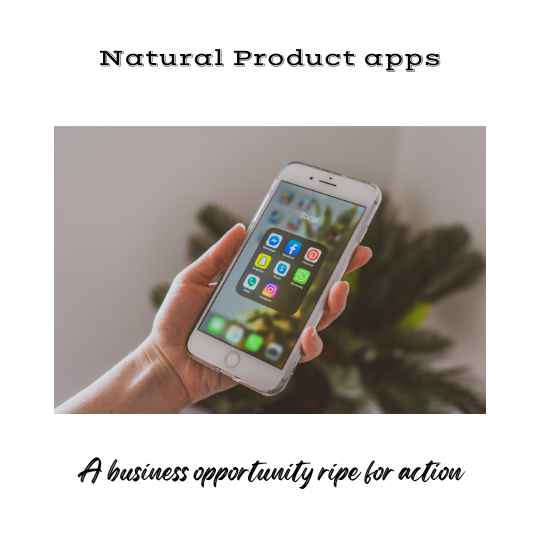Natural product apps are an untapped market opportunity. Recently, I interviewed an entrepreneur who was building an app that would use genetic data to make diet and fitness regime recommendations specific to the individual. A question popped into my mind: Why doesn’t someone in the functional food industry build a similar app?
Most of us want to eat healthily. Many prefer organic food. Natural products, herbs, and lifestyle literature are well appreciated. Then why is it that natural products-related apps have not gained popularity? After all, we buy many functional food items online on Amazon, eBay, and others.
In the health and lifestyle category, fitness apps are the most popular. They are well-designed and user-friendly and give simple outputs such as calories burnt, distance covered, heart rates achieved basal metabolic rate, and other parameters. The platforms of Amazon, eBay, and others are extensively used because navigation and purchasing are easy and convenient.
It is not that there are no apps on herbs, medicine, and natural products. Individual companies create electronic marketplaces to sell their products online. Others are in the form of mobile-friendly ebooks. These contain information on products, medicinal uses, and scientific background material. But the download rate of these apps is quite low.
It is not as though there is little interest in natural products. Natural products have quite a few diehard supporters among greens and vegans consumers. Many either used or bought a functional food product at least once in their lifetime.
We will concede that globally, functional food products haven’t become a rave. Many people continue to have doubts about their efficacy. The natural products and functional food industry are conscious of this concern. The industry is fragmented with a preponderance of small players. Most have limited capital at their disposal. However, the industry is full of entrepreneurs who have dedicated their lives to studying and promoting functional food products.
Many companies based in North America and Europe actively engage with scientific institutions. Together they have written dozens of papers and conducted trials validating the medicinal properties of individual natural products. Many companies are sharing these scientific papers and reports on their websites. I have seen a few sites carrying videos too. But websites alone are not enough. The likelihood of a skeptic discovering a supporting scientific paper is quite low.
Simple, well-designed, and well-promoted apps are more likely to be downloaded and discovered than finding a scientific paper on a static website. The app, of course, will need to be user-friendly and should address a user’s need. It also needs to be available on both iPhone and android phones.
Building a great app does not require a ton of money. There are plenty of examples of startups building awesome platforms. These have acquired worldwide popularity.
At the heart of an app lies the algorithm, a sequence of instructions that enables the software to yield a specified output. The first step in app-making is to prepare a detailed process map that captures the key elements of a product property and its impact.
But, if we intend to build a blood sugar management product app. The starting point could be capturing insulin level data. Tracing the impact of a nutraceutical on insulin levels would form part of the algorithm. Unlike a scientific paper, the information is placed sequentially.
This could include capturing the chemical constituents of the individual products, the action of each ingredient on a particular body part, and so on. The link between each ingredient and another and its impact on a body part—in this case, the pancreas—will have to be plotted.
A business analyst generally creates this first document. The analyst will gather information from the natural product ingredient expert and the supporting scientific team. The software writing team then uses this analysis document. This team creates the app system design, writes the code, and builds the app. It is teamwork between analysts and software engineers. The role of the natural products team of domain experts is critical. Without their help, producing a meaningful app will be nearly impossible.
Once the app is ready, it is tested and rolled out. From then on, it is marketing and promotion. Digital marketing is the way to go. All social media channels and technologies like virtual reality, augmented reality, and machine learning can be leveraged and incorporated into the code.
Why don’t some of you in the functional food space take a shot at building an app for a nutraceutical product? I am sure there will be youngsters in Silicon Valley willing to give you a hand at this. The task may appear to be daunting, but it can be accomplished.
